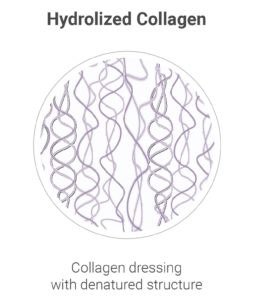From a structural point of view, collagen is made of a triple helix of diversely composed filaments, differentiated by polypeptide amino-acids. Collagen molecules are predominantly synthesized by fibroblasts, but also by chondroblasts, osteoblasts and epithelial cells. These molecules are then stored in the extracellular matrix (ECM), where the triple helix structure, composed of three alpha-chains, connects with other more complex fibrils of a reticular and elastic nature, thus reinforcing its characteristics.
This assembly can be considered a real tissue matrix, capable of taking on different degrees of elasticity and flexibility (figure 1).
in the healing process?
Collagen is a fibrous protein found in the ECM of human tissues such as skin, tendons, ligaments, cartilage, bones, and teeth; it makes up approximately 25% of all proteins in the human body. Collagen plays an important role in the biological process of cicatrization, in that it is the driver of tissue repair processes.
Its mechanical action provides structural support and contributes to:
1. offering a load-bearing structure (scaffold) to recover substance loss
2. controlling differentiation, migration and synthesis of several cell proteins
3. fostering physiological production of fibroblasts, granulation tissue and native collagen
4. facilitating contact between platelets and coagulation factors (hemostasis)
5. favoring the formation of new capillaries (angiogenesis).




